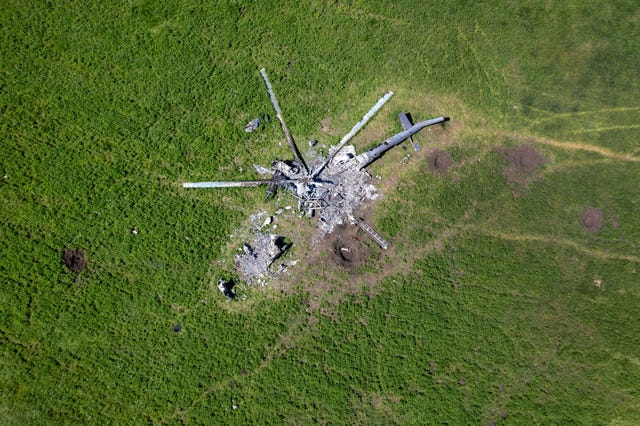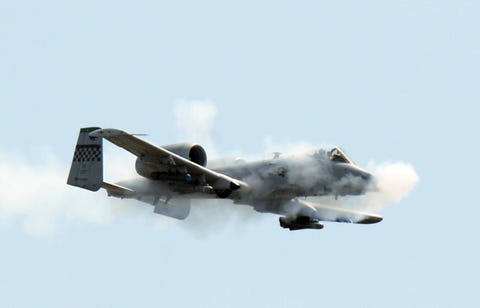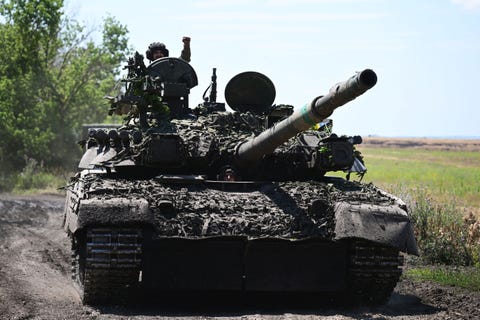KYLE MIZOKAMI

Russia’s war in Ukraine, now entering its 169th day, has seen its share of upsets and surprises. The largest European war since World War II, the struggle between Russia and Ukraine is making Ukraine increasingly reliant on NATO-supplied high-tech weaponry. As both sides try to innovate their way to victory, a number of weapons, some in use for centuries, are likely fighting in their last war.
War, especially between nation states, is a competition for which there is no second place. The prospect of annihilation is strong incentive for a country to bring its best in science and technology, through innovating new weapons and tactics to ensure victory. As other countries race to field new weapons themselves, they’re discarding old tech rapidly, creating a new, worldwide status quo.
The war in Ukraine is no different. Here are four weapons that are obsolete—or close to obsolete—as this unique conflict nears the six month mark.
Trench warfare goes back centuries as a means of protecting infantry soldiers from small arms and artillery fire. Fighting trenches are long, deep holes cut into the earth, sometimes stretching for miles, providing cover where there otherwise is none. World War I is the most famous trench war, although trenches have been featured in wars before and since.
Ukraine’s eastern front features hundreds of miles of trenches, and both Russian invaders and Ukrainian defenders have dug them wherever the war bogs down for both sides. The rise of armed drones, however, allows armies to drop grenades straight down into trenches. Another nail in the coffin for trenches is the use of small-caliber cannon proximity fuses, which can be electronically set to detonate above fighting trenches, showering the enemy taking shelter inside with shrapnel. Here’s an example:
It’s not clear what, if anything, will replace trenches. They are easy to create and require no extra building materials, so there’s a strong incentive to keep using them. Still, armed drones will make life more complicated—and dangerous—for the troops that shelter in them.
Towed Howitzers

Ukrainian servicemen fire a towed howitzer in the Donbas region, July 2022. Although powerful, towed guns like this are vulnerable to enemy counter-battery fire.
FUTURE PUBLISHINGGETTY IMAGES
Howitzers, large-caliber guns that bombard enemy troops with explosive shells, have also been around for hundreds of years. Large, heavy, and relatively easy to produce, howitzers are towed to their firing positions by horse or truck. A battery of four to six howitzers must be towed into place and unhitched from its transport. The guns are then “laid in,” aligned so they can bring all of their fire on a common target, and then made ready to fire. The laying-in process can take up to eight minutes.
In wartime, towed howitzers must “shoot and scoot,” quickly picking up and moving to a new location to avoid enemy return fire, or “counter-battery fire.” Counter-battery fire has always been a problem for artillerists, but the use of radar (like the American AN/TPY-36 supplied to Ukraine), modern communications, and precision-guided munitions often means that enemy shells could be whizzing toward a towed artillery firing position in seconds, catching the guns and gunners before they can redeploy.
The war in Ukraine likely means the end of towed artillery. Self-propelled howitzers, like the French CAESAR, Swedish Archer, and German Pz2000, place the guns on tracked armored chassis, with everything needed to lay in and fire the guns built into the vehicle. A self-propelled howitzer like CAESAR, already provided to Ukraine, can fire a volley of shells and then drive to the next firing position in seconds.
Manned Frontline Aircraft

A U.S. Air Force A-10 Thunderbolt II attack aircraft jet fires its 30-millimeter cannon during a joint military exercise at Crow Valley, Philippines, 2015. The A-10 has a strong following in the general public and Congress but is obsolete for frontline use against an enemy with modern air defenses.
Introduced in World War I, aircraft have diversified to fulfill dozens of roles in warfare. One of the most important is the close-air-support airplane, a fixed-wing aircraft or helicopter meant to attack enemy positions on the front line. Today, the U.S. military has aircraft such as the AC-130J Ghostrider gunship, AH-64 Apache attack helicopter, and A-10 Thunderbolt, all of which can deliver precision fire against an enemy target on the ground—as long as the enemy doesn’t have advanced surface-to-air weapons.
The war in Ukraine has laid bare a dangerous truth, that in modern war against a well-equipped adversary, aircraft can no longer operate close to the front line. Russian air defenses are the standard against which to measure modern enemy surface-to-air threats, and they have taken a serious toll on Ukraine’s manned and unmanned aircraft. Whatever their shortcomings, surface-to-air missile systems, including the low altitude Tor, medium altitude Buk, and long range Triumf systems, can inflict serious losses. Despite the fact that the Russian systems are all dated, they still pose a considerable threat.
Aircraft can still operate effectively near the battlefield, but there will have to be changes to how things are done. Unmanned drones can eliminate casualties. Armed drones that can do reconnaissance and then precisely deliver a tank-killing warhead, what U.S. Army aviators call Air Launched Effects (ALE), will allow helicopters to stand off farther from the front line and still provide effective support. Stealth and the suppression of an aircraft’s infrared signature can make it more difficult for air defenders to detect, track, and engage aircraft on the front line.
Tanks

A Ukrainian Army Oplot tank in eastern Ukraine, July 2022. Tanks are facing new robotic threats from above.
MIGUEL MEDINAGETTY IMAGES
Thanks to the invasion, tanks are teetering on the edge of obsolescence. Russia is visually confirmed to have lost at least 936 tanks in Ukraine, the equivalent of three tank divisions. Although a combination of factors is responsible for these heavy losses, one major factor is the use of Western anti-armor weapons such as the Swedish NLAW and American Javelin. Tanks are also proving vulnerable to drones capable of dropping high explosive grenades into the thinly armored, vulnerable areas on Russian tanks. A drone armed with six grenades could theoretically destroy a platoon of Russian tanks twice over.
If a 60-ton, 10-million-dollar armored vehicle can be disabled by a commercial drone rigged with a grenade, it’s a fair question whether that vehicle is still relevant on the battlefield. Yet as vulnerable as tanks are at the moment, their combination of firepower, protection, and speed make them second to none on the modern battlefield. The introduction of some sort of defensive weapon, like a radar-controlled machine gun (or laser) searching the sky above the tank, could neutralize the drone threat … for now.
No comments:
Post a Comment